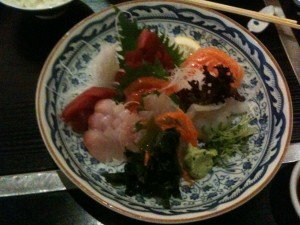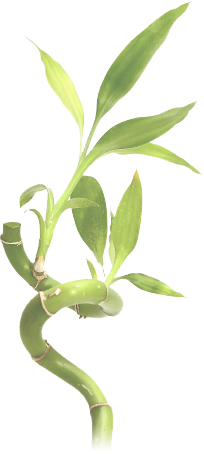Best Sake in Brussels
Posted by bmountain | Posted in Restaurants, Sake | Posted on 10-07-2010
Tagged Under : Kubota Manju, le grand place, Sake, Sake Brussels, Samourai Restaurant Brussels, sashimi, sushi
Rue du Fossé aux Loups 28
1000 Brussels, Belgium
I hadn’t been to Europe since 2008 so I was delighted to learn recently that the summer ICANN meeting this year would be in Brussels. I’ve been pretty behind on

Le Samourai Restaurant, Brussels Belgium
posting to Sake World with work being exceptionally crazy so I wanted to make sure to find and write about a memorable sake experience this trip. My hotel concierge came up with an excellent location and I think as a result he’s going to be a honorary member of the Sake World Hall of Fame when I create it (email me to pre-order your T-Shirts).
ICANN is the organization that administers the Internet and as my company’s representative I have the good fortune to travel to some interesting places and spend time with customers and other industry types. The ICANN organization itself has to cover a lot of ground so as a result much of the work is done by people in the industry who volunteer on working groups. These groups meet via conference weekly throughout the year, working on their respective projects. The ICANN meetings are a culmination of these working groups where after months of preparation, decisions are made (or not) and everyone gets to burn the candle on both ends and the middle for a week.
The spring ICANN meeting was in Nairobi and unfortunately my company took the bomb threats seriously and nixed my attendance. I was disappointed as I’ve avoided bombs so far and couldn’t really see the problem but I guess insurance rates could have been an issue. Last fall’s meeting was in Seoul which is not exactly a sake mecca and I never really got anything worth writing about. It was mandatory that this trip be different.
I had dinner plans with Michele Neylon and Adam Eisner, two close friends and customers who weren’t big on fish so I needed to find a place that would cater to the non-sushi crowd. Our Most Excellent Concierge recommended Le Samourai, high-end but not absurdly priced (added benefit I now know how to spell Samurai in French). He agreed to book a table for me when Samourai opened and I went to meet my friends at Le Grand Place in the heart of Brussels.
Le Grand Place is truly one of the most impressive town plazas I’ve ever experienced. It measures 360 by 223 feet and is surrounded by massive gothic buildings that house their city hall, several enormous guild halls,

Le Grand Place, Brussels Belgium
and the Bread House. The origins of Le Grand Place date back to the end of the 11th century when an open air marketplace was set up there. The market was well situated along the Steenweg (Dutch: Causeway), an important commercial road which connected the prosperous regions of the Rhineland and the County of Flanders. The Brussels City Hall was built on the south side of the square in stages between 1401 and 1455, and made the Grand Place the seat of municipal power. It towers 96 metres (315 ft) high, and is capped by a 3 metre (12 ft) statue of Saint Michael slaying a demon.
On August 13, 1695, a 70,000-strong French army under Marshal François de Neufville, duc de Villeroi began a bombardment of Brussels in an effort to draw the League of Augsburg’s forces away from their siege on French-held Namur in what is now southern Belgium. The French launched a massive bombardment of the mostly defenseless city centre with cannons and mortars, setting it on fire and flattening the majority of the Grand Place and the surrounding city. Only the stone shell of the town hall and a few fragments of other buildings remained standing. That the town hall survived at all is ironic, as it was the principal target of the artillery fire. The square was rebuilt in the following four years by the city’s guilds. Their efforts were regulated by the city councillors and the Governor of Brussels, who required that their plans be submitted to the authorities for their approval. This helped to deliver a remarkably harmonious layout for the rebuilt Grand Place, despite the ostensibly clashing combination of Gothic, Baroque and Louis XIV styles.
Tucked in and around the larger buildings are pubs and restaurants that do a booming business. We stopped at Le Roy d’Espagne for a couple of excellent Belgian beers and really interesting people watching before dinner. Like most pubs in the area, Le Roy served several hundred beers and I tried a white beer which was absolutely superb. I don’t think during the entire week that I was there that I drank the same beer twice and I don’t recall being disappointed with any of them. Brussels is a town that knows it’s beer.
We eventually pulled ourselves away from Le Roy and walked a few blocks to Le Samourai. Fortunately our our trusty concierge had come through for us and our table was ready. travel tool We sat down and immediately I knew I was in trouble. I don’t know any Japanese and my French vocabulary for Japanese restaurants is pretty limited. We somehow managed to get the gist of things from our waiter and Adam and Michele ordered a couple of beef dishes. I ordered the chefs sashimi selection. When I lived in France I found the sushi to be very different than what I was used to in the states and I wasn’t always crazy about it. I wasn’t sure what to expect but the sashimi was quite good and I was not disappointed. Definitely not at the level of some of the better NY sushi places like Blue Ribbon but the value for money was right up there.

Le Samourai, Chef's Selection, Sashimi
My dinner guests hadn’t tried fine chilled sake so I was hoping to make their first experience a good one. Michele and Adam are that rare combination of exceptionally smart and fun and to order a dog of a sake definitely would have been a let down. I wasn’t familiar with any of the sakes on the menu so I took our waiters recommendation and ordered a bottle of Kubota Manju, and it was fantastic. Smooth, crisp, and served at just the right temperature. One of the nicest sakes I’ve ever experienced. We couldn’t have picked a better one and I’ve since been told that Adam and Michele are starting sake blogs of their own!
We finished the meal with green tea ice cream and then left to meet other conference attendees at our official workgroup pub, Delirium, with over 2,500 beers on the menu. I had a feeling that it was going to be an exhausting week.
Upon returning home I did some research on Kubota Manju. Apparently the brewers do not designate the level of this sake but it’s technically a junmai daiginjo since the rice is milled down to 28% of it’s original size. Significantly more pure than most daiginjos which are milled to 40 or 50%. Kubota is produced by Asahi Shuzo in te Nigata province of Japan. Surprisingly Asahi Shuzo is one of the largest sake breweries in the world and they use a completely unique designation for their sale. There are a couple of excellent posts I found on-line that talk about this sake, one is TrueSake.com where the Sake Guy John Gaunter talks at length about this phenomenal brewery.
“Few sake brands in Japan can equal the combination of ruthless branding power and true quality of Kubota. Perhaps the quintessential representative of Niigata sake, their reputation is all but unparalleled in the world of sake.
The brand name Kubota was actually only created in 1985, with the original brand name being Asahiyama, and Kubota being a “yago” or nickname for the company used by locals around the time of its inception back in 1830. Their timing was good, as at that time (in the early to mid 80s), a combination of the “ginjo boom” and a nationwide frenzy over Niigata sake were both taking root. Kubota rode this, fueled no doubt with diligent marketing efforts coupled with pristine quality, so that within a scant ten years, Kubota grew to unprecedented heights of popularity that it still enjoys today.
The company (Asahi Shuzo) is the largest in Niigata, which is the third largest sake-producing region in Japan, and one of the largest kura in all of eastern Japan. They have long been innovative, and were one of

Adam Eisner (left) of Tucows and Michele Neylon of Blacknight Solutions
the first kura to commit to going from wooden tanks to ceramic lined steel tanks back in 1929, way ahead of the national curve. This doubtlessly helped create the light, dry, very refined style that is Kubota, if not Niigata sake in general.
And it is not as if their success or penchant for quality is something new, either. In 1932 and 1933, they won first place among all sake in the country in the national new sake tasting competition; then in 1938 they won both first place *and* second place in the same vaunted competition. Few kura in the country can claim a feat equaling this.
Back in October of 2004, a brutal earthquake hit Niigata, and Kubota was one of 40 breweries hit hard. Tens of thousands of full bottles awaiting shipment were lost or damaged. “I can’t imagine the total damage,” said a company rep in a newspaper article. “It’s no exaggeration to say this is our company’s biggest crisis since its foundation in 1830. We’re going to do our best to overcome this difficult situation.” But overcome it they did, even employing some clever marketing like a “muroka nama genshu” (unpasteurized, unfiltered, undiluted) sake. Such a product had never been offered by the company, and was hailed as being in honor of 20 years of Kubota. Needless to say, it sold out in a jiffy (it was good, that’s for sure), providing much-needed revenues and stability, I imagine. But it was wonderfully indicative of the great leadership that has obviously always been behind that company.
There are about six grades of Kubota, depending on the season. Rather than go by simply the grade, such as ginjo-shu or daiginjo- shu, they all have a product name that is somewhat indicative of the level – assuming that is you can speak and read the language.
The three most well distributed and representative of Kubota are Hyaku-ju, Sen-ju and Man-ju. The “-ju” in these three means “congratulatory” or “long life,” and is the same character as the su- of sushi, for what it’s worth. Hyaku means 100, Sen means 1000, and Man means 10,000. Put them together and you can see how they are fairly easy to figure out. For the record, Hyakuju is a honjozo, Senju is a Tokubetsu Honjozo, and Manju is a junmai daiginjo.
By far the most popular of these is Kubota Manju. It has come to represent fine sake for so many Japanese everywhere. If you know nothing about sake, order the Kubota Manju. You will be safe, and no one will smirk or giggle. That is what it seems so many people are doing. But in truth, you will never go wrong with this product, so that conventional thinking holds up well.
Kubota Manju is incredibly clean, crisp, and elegant. It is indeed light and refined, but not at the expense of either flavor or aroma. Not by any stretch. Distribution is tightly controlled and it is not cheap, but what it is and what it represents almost dictates it must be tried”
http://www.truesake.com/newsletters/2007-01.php
Another excellent post on Kubota Manju can be found on vinography.com:
http://www.vinography.com/archives/2009/01/kubota_manju_junmai_daiginjo_n.html
Information on Le Grand Place from Wikipedia:
http://en.wikipedia.org/wiki/Grand_Place


